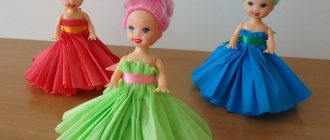How to come up with a riddle
Riddles are a traditional folk creation, inseparable from fairy tales. Together with them, riddles in an accessible form help the child to explore the world and get acquainted with unfamiliar ideas and objects. Riddles develop figurative and associative thinking and teach children to fantasize. A two-year-old child is thinking about a certain inedible pear, and an upcoming first-grader can easily guess what it is that sprouts without seeds. It’s no less interesting to come up with riddles yourself.
Instructions
1. First, you need to prefer the object or idea that will be discussed in the riddle. It can be an animal, a household item, or a natural phenomenon. 2. Next, think with your child about how the hidden object or animal differs from others. Specific questions will help. What is he like? What is it like? Why is this needed or where is it used? What are the distinguishing marks of this animal? Why is this item amazing? 3. The key signs and features of the hidden object named by the child must be included in the riddle, but do not mention the idea itself or the object in the riddle. Rhymed riddles are remembered better than anyone. When coming up with a rhyme, consider the age of the child. A child under 3 years old is unlikely to remember many lines. 4. Riddles based on negation are especially popular among children. Let’s say, “It’s not a dog, but it won’t let you into the house.” If you can’t come up with rhyming riddles, try the option with negation, it is much easier for children of all ages. 5. As an example, let’s look at an object – a bicycle. What is he like? There are only two wheels and you need to pedal independently, otherwise the bike will fall. Here’s the riddle: “I can only stay on the move, but if I stop, I’ll fall.” Another option, the most primitive one, is “On wheels and with a steering wheel, not a car.” 6. At first, self-invented riddles can be very primitive, each consisting of one sentence. However, the benefits of such creativity are enormous; riddles teach you to think, explore, and even develop a sense of humor. Later, after the child gets used to riddles and learns to solve them, tell him about riddles for ingenuity, teach him to come up with such puzzles.
The mental and creative development of a child is a significant task for every mother, and for this purpose a variety of activities, games and exercises are used, which children willingly perform in a playful way. Creative thinking is well trained by composing poems and stories, and you can also invent riddles together with your child - in this case, you will enjoy not only the writing process, but also the subsequent solving of the intended rebus by you or your child.
Instructions
1. When coming up with a riddle , consider the features and characteristics that all riddles have - they never name the riddled object itself, and it must certainly be replaced with any analogue, one that one way or the other hints at what you riddled. 2. The object must be associated with the hidden word or action, and in order to make guessing easier, you must list its main features and signs in the riddle. 3. Ask several questions in relation to the item you are wishing for in order to come up with an association for it: what exactly are you wishing for, what is this item needed for, what is it similar to, what is it made of, what is it used for and by whom. Include the results of these questions in the riddle text, and if the text is poetic, your riddle will acquire increased creative value. 4. The listener, who is told a riddle, should have a reverse associative series with the things being described, one that should lead him to the solution. Whatever object you describe in the text of the riddle, it must have the same signs and functions that the riddled object has. For example, if you decide to riddle a shovel, you can use the image of a spoon in the text of the riddle as an association. 5. To make the riddle easier to solve, you can name the exact number of letters in the word or even depict the required letters in squares on paper. 6. Ask leading questions, use the terms “hot” and “cold” when they guess the word you have in mind. 7. You can also make up a riddle similar to the popular game “Crocodile”. To do this, you need to depict the mystery object without naming it out loud. The more difficult it is to depict the object you have in mind, the more exciting the game will be. As you can see, it’s very easy to come up with a riddle - just realize what the riddled object is like and endow the association you have made with its features and properties.
We have all guessed fascinating riddles more than once in our lives. Children love to spend time usefully and answer questions. In order to compose a riddle , you need to try very hard so that it matches and strengthens the child and has a coherent design. You will need
- A sheet of paper, a pen, markers.
Instructions
1. First, determine the age of the children for whom the riddles will exist. 2. Divide the sheet into several squares, with an image on one side and the text of the riddle on the other. 3. The riddle should be either a stanza or a meaningful set of words, one that will undoubtedly make it possible to guess what is being said. 4. Come up with a riddle , a stanza, say, so that the first line contains an introduction, the second line talks about the characteristic features of the riddled object. The third and fourth lines must provide a guiding hint. The stanza must be arranged in rhyme. 5. Draw the answer or write it under the stanza, enclosing it in parentheses. Video on the topic Please note! Be careful when creating a riddle. It should not be long and should be invented like a poem, that is, have a rhyme. Helpful advice: To prevent the solution from being visible, write it “upside down” or hide it in the drawing itself.
Whether you are at the beginning or the end of the text, creating a title causes a lot of problems. However, you are allowed not to think about this until the end of the story. But it happens that the last sentence is completed and the details are finalized, but the name does not appear.
Instructions
1. It is impossible to be dismissive of this. The title is the shortest part of the text, but, at the same time, the 1st and exclusive chance to capture interest. The possible reader does not know how amazing your story is. He glances over the dreary name and moves on to another page. 2. Do not base the entire title on things and people absolutely unknown to the reader. The person who encounters the original work does not know your characters. “Torluor Prenglansky” will not arouse enthusiasm. And if you want to leave someone’s name in the name, then supplement it with clarifying details. Let's say, "Torluor of Prenglan, slayer of the Mother of Pearl Dragons." Dragons are already known to the reader, and there is a chance to attract those who are interested. Look at the famous book “Harry Potter and the Philosopher’s Stone” by JK Rowling. If you don’t know the character, then it’s the second half of the name that is of interest. 3. Be authentic. Both the Internet and bookshelves are full of trivial names. Play with the known expression. This technique is used by the energetically sold-out Daria Dontsova - “The White Horse on the Prince”, “The Frog of the Baskervilles”, “The Firmament in Rubles”. Make an unexpected combination. “Logarithmic spider” or “wireless snake” have excellent chances of beating the same poisonous ones. A person will want to know how a spider can be connected with mathematics. Come up with a short, succinct and smart statement. Remember “Disaster from the Mind” by Alexander Griboyedov, the title of which has become everyone’s famous phrase. 4. Don’t lie. If the reader is attracted by the title , but there are no hints of it in the book, he will feel fooled. This may be forgiven for some literary geniuses, but it’s not worth the risk. 5. Season with humor, vivid images, musicality and intrigue. Just don’t try everything at once. It’s better to use irony or sarcasm, but only if you’re good at them. On the contrary, one is allowed to daringly miss. Many writers took a line of a poem as a title, creating a melodic sound. Let's say, Chingiz Ai, taken from Boris Pasternak. The use of intrigue implies a hint, unresolvedness, a riddle in the name. 6. Keep plot twists secret. Do not reveal the ending of the work or unforeseen moves for the sake of a brilliant title. No matter how important it is to grab attention at the beginning, the reader also wants to get something from the reading process. 7. Analyze your text. Most likely, you don't need to rewrite the story again. Take a closer look, look for something interesting. Orange unicorns, flying tigers, significant thoughts, a setting, a delightful artifact, an idea expressed in a veiled form. Use your imagination and everything will be found. Video on the topic
Riddles have existed for centuries. They are constantly progressing, some of them are asked with a trick, others are based on a play on words. Solving a riddle can sometimes be quite difficult; the approach to solving such problems must be comprehensive.
Primitive riddles In order to solve a riddle, in most cases you need to remember that its main purpose is to confuse a person with a play on words and lead his thoughts astray. When searching for a solution, a person, as usual, invariably looks for a primitive path; in the case of riddles, one invariably needs to think about alternative methods. For example, in the riddle “Who always walks but never leaves his place?” The words “goes” and “won’t do” come to the fore. The first thing that comes to mind is people or animals, however, in such riddles it is impossible to forget about inanimate objects. Analyze the words of the riddle and think about how they are trying to confuse you. Hard Riddles Hard riddles require one to not be literal about their definition. The search for a quick result invariably leads to nothing. In order to solve such riddles, one must look for unconventional methods. Let's say that in Russia it comes first, and in France it comes second? If you delve into the essence of the question itself, you can search for a long answer to the riddle, but the result is primitive - this is the letter “r” in the names of countries. Mathematical Riddles Riddles that require calculations are more difficult, but solving them requires the ability to read between the lines. More often than not, they do not have a simple logical solution. For example, what sign should be placed between 6 and 7 so that the result is less than 7 and greater than 6? This riddle does not have an ordinary mathematical solution with calculation signs, and the positive result is the sign “,”, a decimal fraction. Note! A riddle is a means of development for children, as well as an exercise in reasoning and the knowledge to prove. Invite the children to come up with a riddle themselves or describe an object or phenomenon, and you try to guess it, then switch roles. Let's say - a wall (there is one in every house, it can be made of brick, concrete, stone, wood). Useful advice Coming up with riddles is a creative activity that is accessible to children from a young age. Inventing personal riddles for a child is no less exciting and useful than solving them. The riddle has a special power on the development of a child’s thinking.







